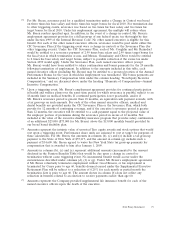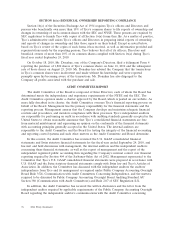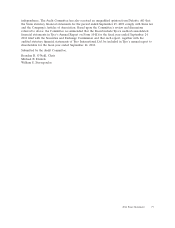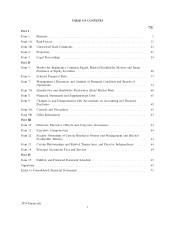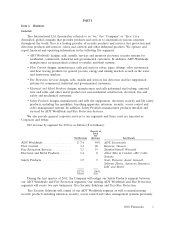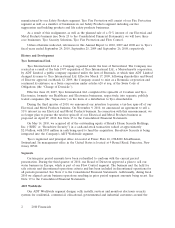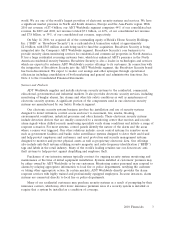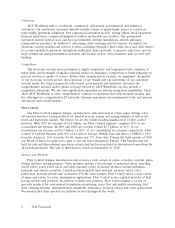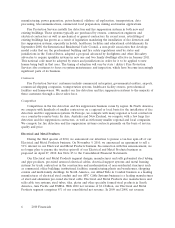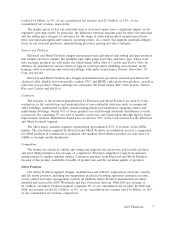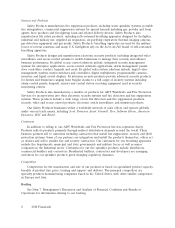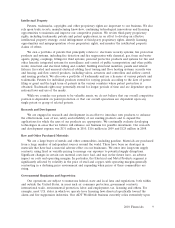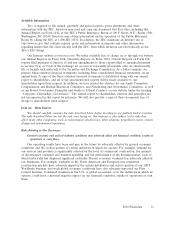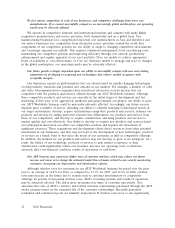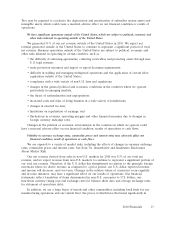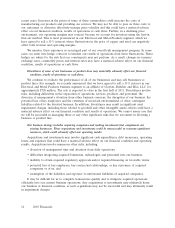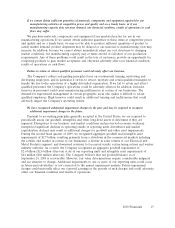ADT 2010 Annual Report Download - page 93
Download and view the complete annual report
Please find page 93 of the 2010 ADT annual report below. You can navigate through the pages in the report by either clicking on the pages listed below, or by using the keyword search tool below to find specific information within the annual report.Flow Control products are used in many applications including power generation, chemical,
petrochemical, oil and gas, wastewater, pulp and paper, commercial irrigation, mining and food and
beverage. Flow Control also provides engineering, design, inspection, maintenance and repair services
for its valves and related products.
Flow Control products are sold under many trade names, including Anderson Greenwood, Biffi,
Crosby, Keystone, KTM, Raychem, Sempell, Tracer and Vanessa. Flow Control sells its services and
products in most geographic regions directly through its internal sales force and in some cases through
a network of independent distributors and manufacturers’ representatives.
Customers
Flow Control’s customers include businesses engaged in a wide range of industries, including
power generation, chemical and petrochemical, pharmaceutical, oil and gas exploration, production and
refining, mining, water, food and beverage, marine and shipbuilding and other process industries.
Customers include end users as well as engineering, procurement and construction companies,
contractors, original equipment manufacturers (‘‘OEM’’) and distributors. Flow Control operates an
extensive network of sales, service and distribution centers to serve a wide range of global customers.
Competition
The flow control industry is highly fragmented, consisting of many local and regional companies
and a few global competitors. We compete against a number of international, national and local
manufacturers of industrial valves as well as against specialized manufacturers on the basis of product
capability, product quality, breadth of product line, delivery and price. Our major competitors vary by
region.
Fire Protection Services
Our Fire Protection Services segment designs, sells, installs and services fire detection and fire
suppression systems for commercial enterprises, governmental entities, airports, commercial shipping
companies, transportation systems, healthcare owners, petrochemical facilities and homeowners. We
believe we are one of the largest providers of these systems and services. With 2010 net revenue of
$3.3 billion, our Fire Protection Services segment comprises 19% of our consolidated net revenue. In
2009 and 2008, net revenue totaled $3.4 billion, or 20%, of our consolidated net revenue and
$3.8 billion, or 19%, of our consolidated net revenue, respectively.
Services and Products
Fire Protection Services designs, sells, installs and services fire alarm and fire detection systems,
automatic fire sprinkler systems and special hazard suppression systems. Fire Protection Services
operates under various leading trade names, including SimplexGrinnell, Wormald, Mather & Platt, Dong
Bang, Zettler and Tyco. A significant portion of the components used in our fire detection and fire
suppression systems are manufactured by our Safety Products segment.
Fire Protection Services offers a wide range of fire alarm and fire detection systems. These alarm
and detection systems include fire alarm control panels, advanced fire alarm monitoring systems,
smoke, heat and carbon monoxide detectors, voice evacuation systems and emergency lighting systems.
Fire Protection Services also offers a wide range of fire suppression systems, the majority of which are
water-based sprinkler systems. In addition, Fire Protection Services provides custom designed special
hazard suppression systems, which incorporate specialized extinguishing agents such as foams, dry
chemicals and gases, in addition to spill control products designed to absorb, neutralize and solidify
spills of hazardous materials. These systems are often especially suited to fire suppression in certain
2010 Financials 5


